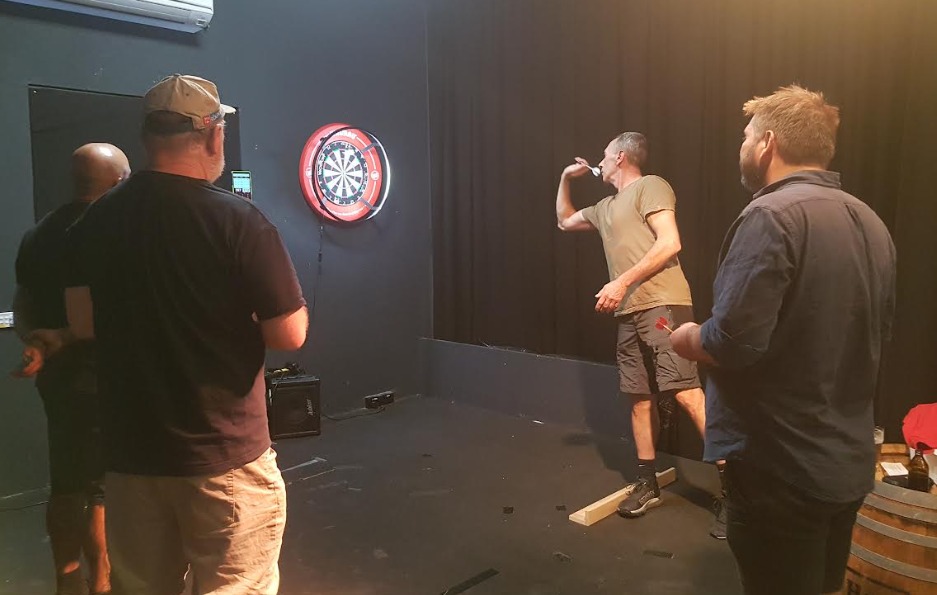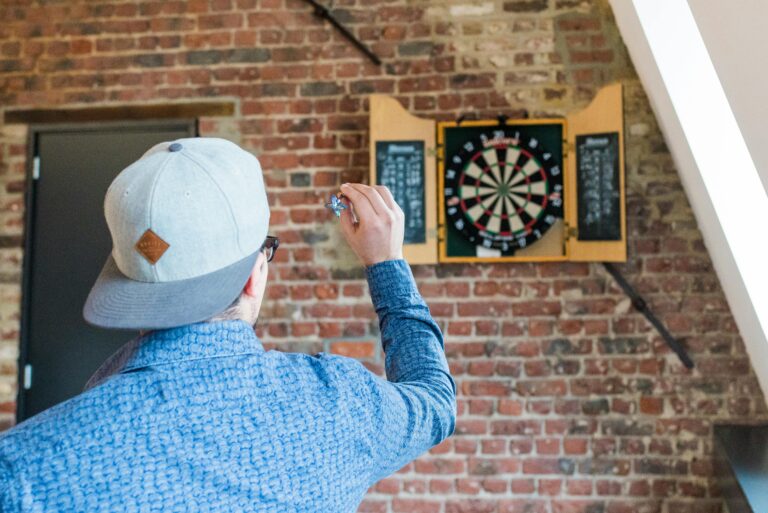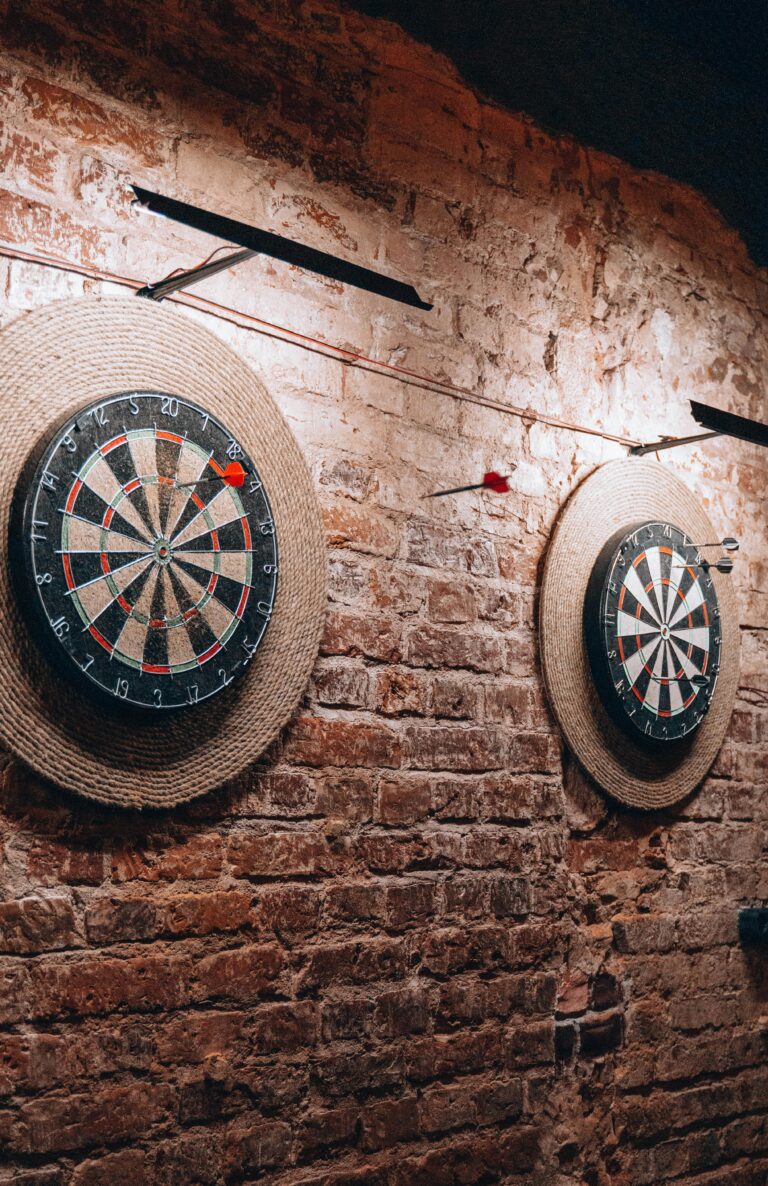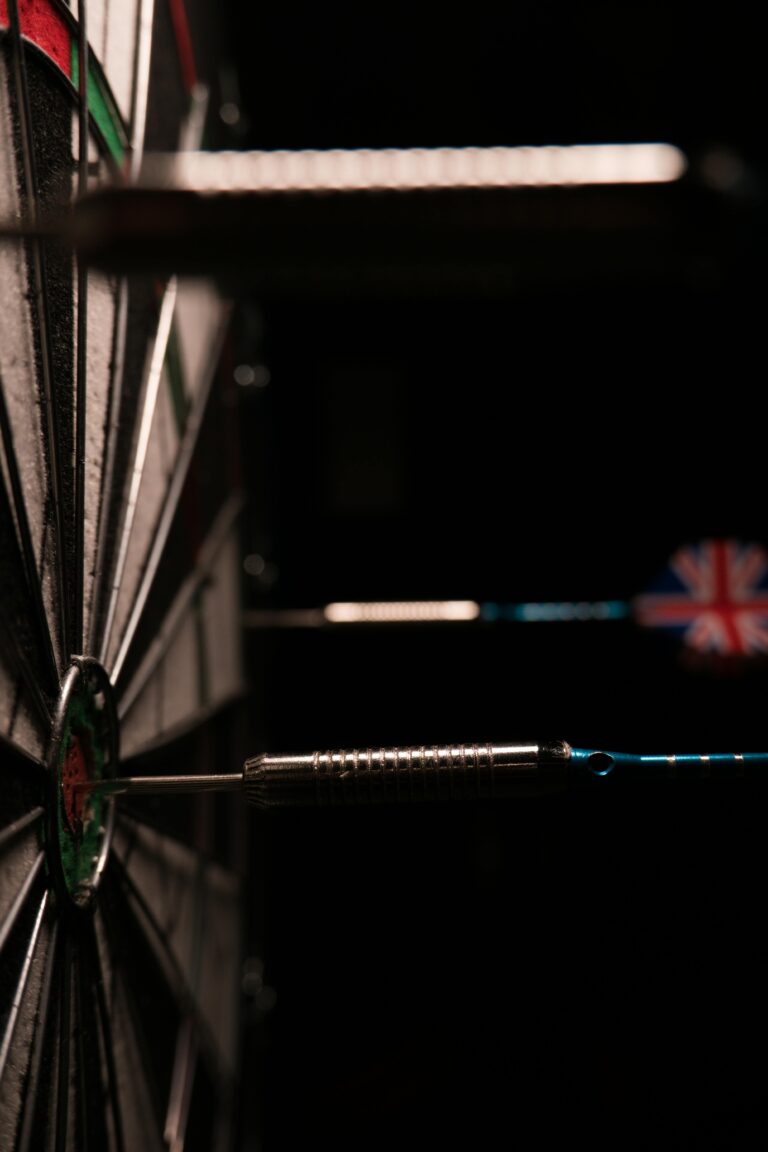Darts History: From Pub Game to Professional Sport
You see it in pubs, you see it in homes, and now you see it on the world stage—Darts has certainly travelled a long way. From its humble beginnings as a pastime for soldiers to its current status as a professional sport, darts has undergone significant transformations. But what exactly propelled this simple game of tossing arrows into a booming industry with global tournaments and professional players? Understanding this evolution reveals not just the growth of a sport but also a fascinating story of cultural shifts and legal battles. Curious about how Darts’ journey unfolded? Let’s explore further.
Key Takeaways
- Darts originated in the UK during the Middle Ages as soldiers’ archery games with shortened arrows.
- The 1908 legal case of William ‘Bigfoot’ Anakin recognised darts as a game of skill, leading to their acceptance.
- The National Darts Association set the first standard rules in 1925, later adopted by the British Darts Organisation.
- The formation of the Professional Darts Corporation in 1992 attracted top talent and high-stakes tournaments.
- TV broadcasting and sponsorships turned darts into a popular and professional sport industry.
Origins of Darts
Darts originated in the UK during the Middle Ages, evolving from archery games played by soldiers. These soldiers would throw shortened arrows at the bottom of wine barrels to pass the time and improve their aim. This pastime quickly gained popularity, and soon people were playing it in their homes and local fairs.
The early versions of darts were quite different from what you see today. In France, for instance, darts were made of wood with metal tips and bird feathers for stability. This rudimentary design laid the foundation for the modern game, even if it looked a bit primitive by today’s standards.
In the early 1900s, darts shifted from a fairground game to a staple in British pubs. Its popularity soared, leading to the formation of leagues and organised competitions. This change helped standardise the game, making it accessible to more people.
Evolution of Equipment
Ever wondered how the equipment in the game of darts has transformed over the years? Initially, darts were just wooden stubs of arrows. But today, they’ve evolved into precision-engineered tools with metal barrels and plastic components. This transformation has greatly improved the game’s performance and durability.
One major evolution is the introduction of plastic shafts and flights. These components not only last longer but also enhance the dart’s flight stability. The dartboards have also seen a significant upgrade. Traditional materials like elm wood have given way to more resilient options such as sisal fibres and coiled paper, which provide better durability and consistency.
Dart barrel shapes have evolved too. Players can now choose from various designs like cylindrical, tonal, and torpedo shapes, each catering to different throwing styles and preferences. This variety allows you to find the perfect fit for your game.
To guarantee consistency, the World Darts Federation has set standards for dart dimensions. These regulations ensure that no matter where you play, the equipment will meet specific criteria, offering a level playing field for all. This standardisation has been pivotal in the professionalisation of the sport.
Key Legal Milestones
While advancements in equipment have revolutionised the game, key legal milestones have also played an essential role in transforming darts from a casual pub pastime into a professional sport. One of the most pivotal moments occurred in 1908 with the landmark case involving William ‘Bigfoot’ Anakin in Leeds. This case marked the official recognition of darts as a game of skill rather than a game of chance.
This legal distinction was vital because it influenced laws surrounding pub games, making darts more accessible and accepted. The court’s decision didn’t just change legal perceptions; it also opened doors for the formation of darts leagues. It provided a foundation for the standardisation of rules, which led to a more structured and organised approach to the game.
Standardisation of Rules
As the sport gained popularity, the establishment of standardised rules became vital for ensuring fair competition and consistency. In 1925, the National Darts Association (NDA) set the first standard rules for darts. This framework laid the groundwork for how the game should be played, making it easier for players from different regions to compete on equal footing.
By the 1970s, the British Darts Organisation (BDO) adopted these rules, further solidifying their importance. This move helped to unify the sport under a common set of guidelines, which was essential as darts began to attract more attention and participants. The standardisation process included:
- Defining the official board size and scoring zones.
- Establishing the distance from which players must throw.
- Setting the weight and dimensions of the darts.
The broadcast of the News of the World Individual Darts Championship in 1972 also played a significant role. It brought the sport into the living rooms of millions, boosting its popularity and emphasising the need for consistent rules.
As darts continued to grow, the formation of the World Darts Council (PDC) in 1992 provided an alternative governing body, leading to a split in darts governance but maintaining the importance of standardised regulations.
Emergence of Professional Leagues
Driven by the increasing popularity of darts, professional leagues began to emerge, evolving the game into a serious competitive sport. The British Darts Organisation (BDO) played a pivotal role in this evolution from the 1970s to 1990s. They organised formal championships and established a framework that elevated darts beyond its pub origins.
TV broadcasting became a game-changer. By bringing darts to a wider audience, it boosted the sport’s visibility and appeal. It wasn’t just a local pastime anymore; people across the country and even internationally started following the matches. This exposure laid the groundwork for more structured competition and greater public interest.
The split in darts governance led to the creation of the Professional Darts Corporation (PDC). This new organisation further professionalised the sport by hosting high-stakes tournaments and attracting top talent. With these organised leagues in place, the level of competition skyrocketed.
Sponsorships began pouring in, reaching millions of pounds. This financial influx underscored the sport’s growth and success. Today, professional darts is a thriving industry, with players earning significant prise money and enjoying celebrity status. The emergence of professional leagues has truly transformed darts into a major competitive sport.
Conclusion
You’ve seen how darts transformed from a simple pub game to a professional sport. The origins in soldier pastimes, the evolution of equipment, and key legal milestones all played vital roles.
Standardisation of rules and the emergence of professional leagues have solidified its status. Darts isn’t just a game of skill; it’s a thriving industry.
So, whether you’re a casual player or a dedicated fan, remember that darts has a rich history and a promising future.







